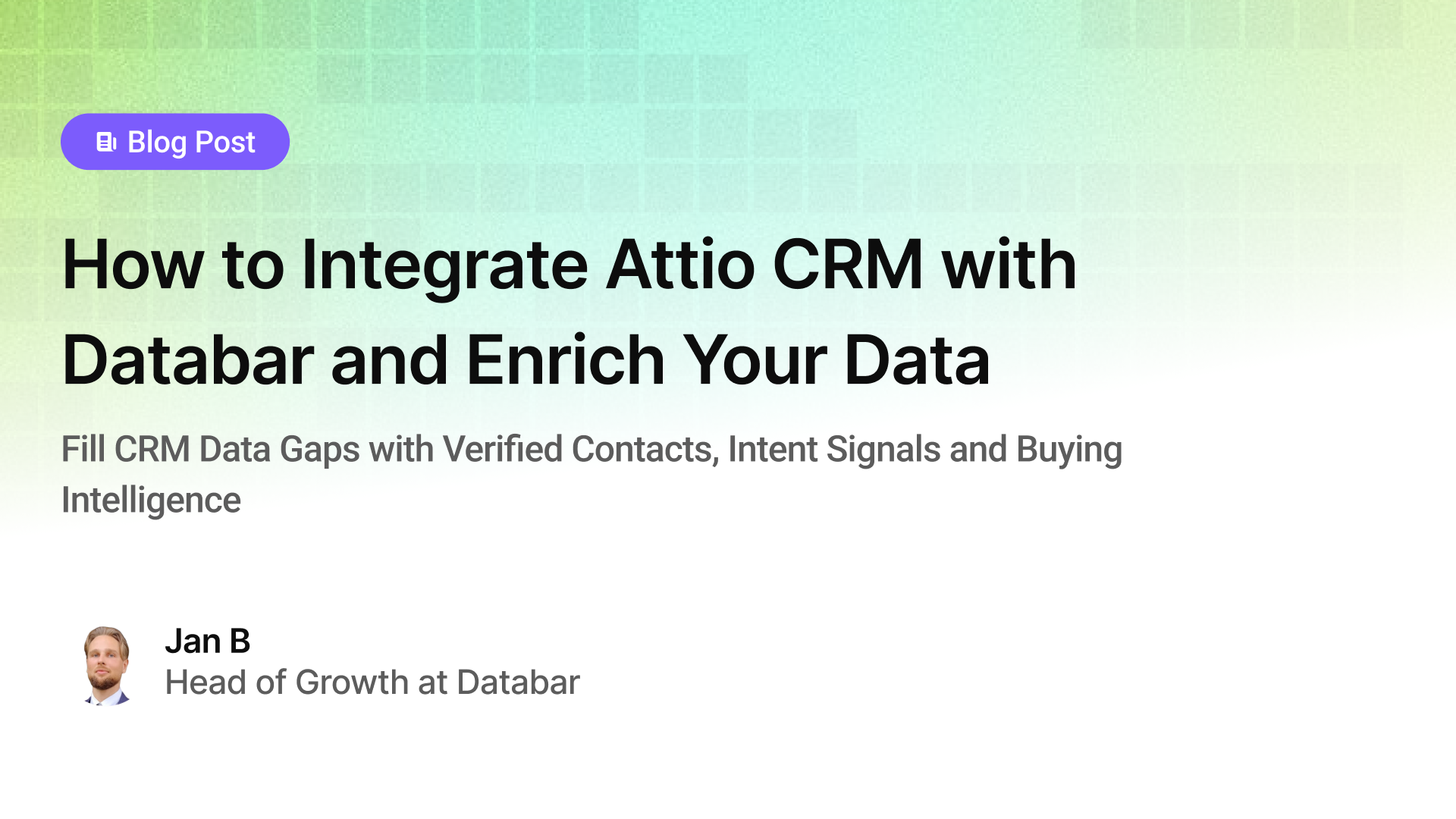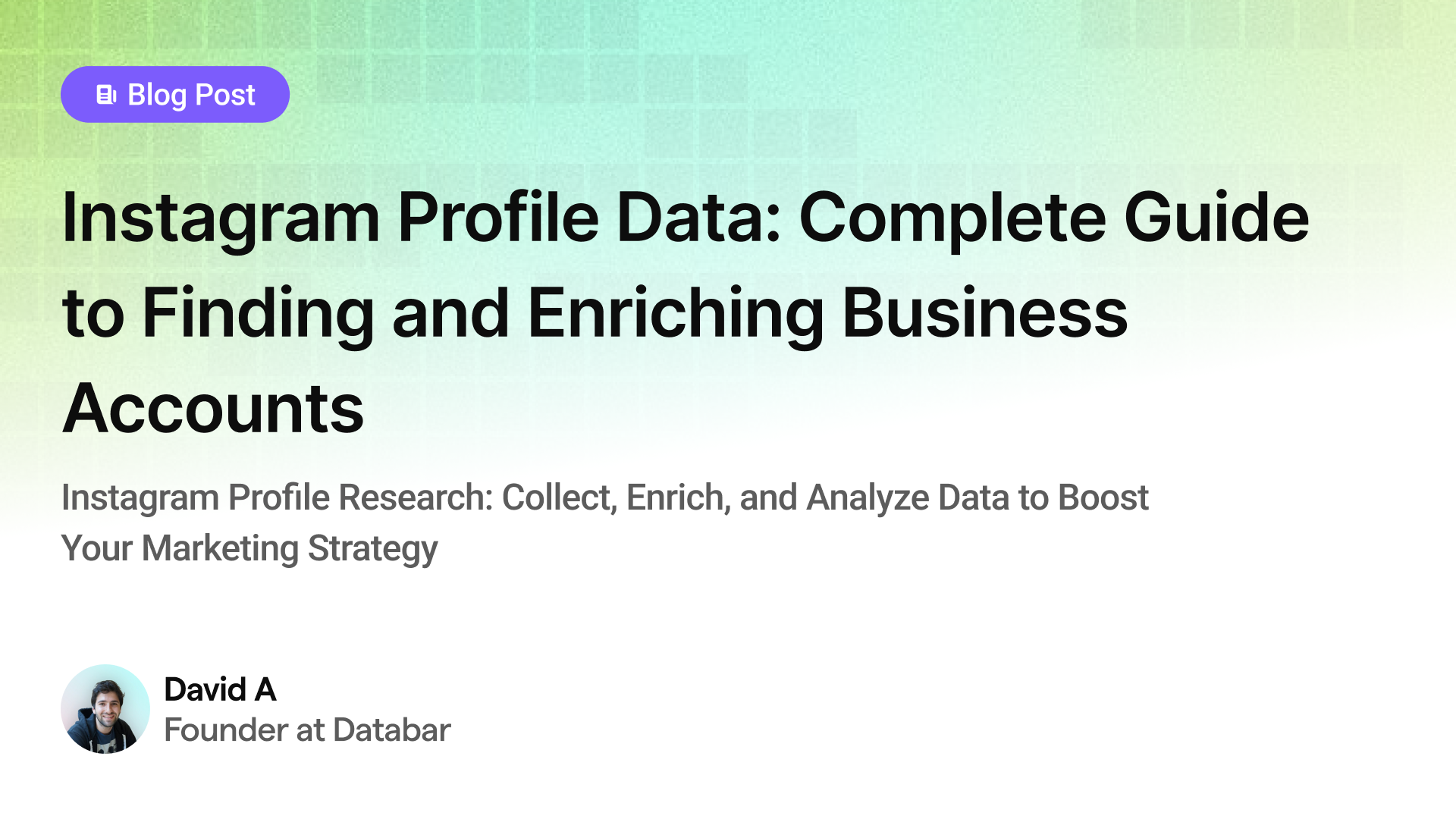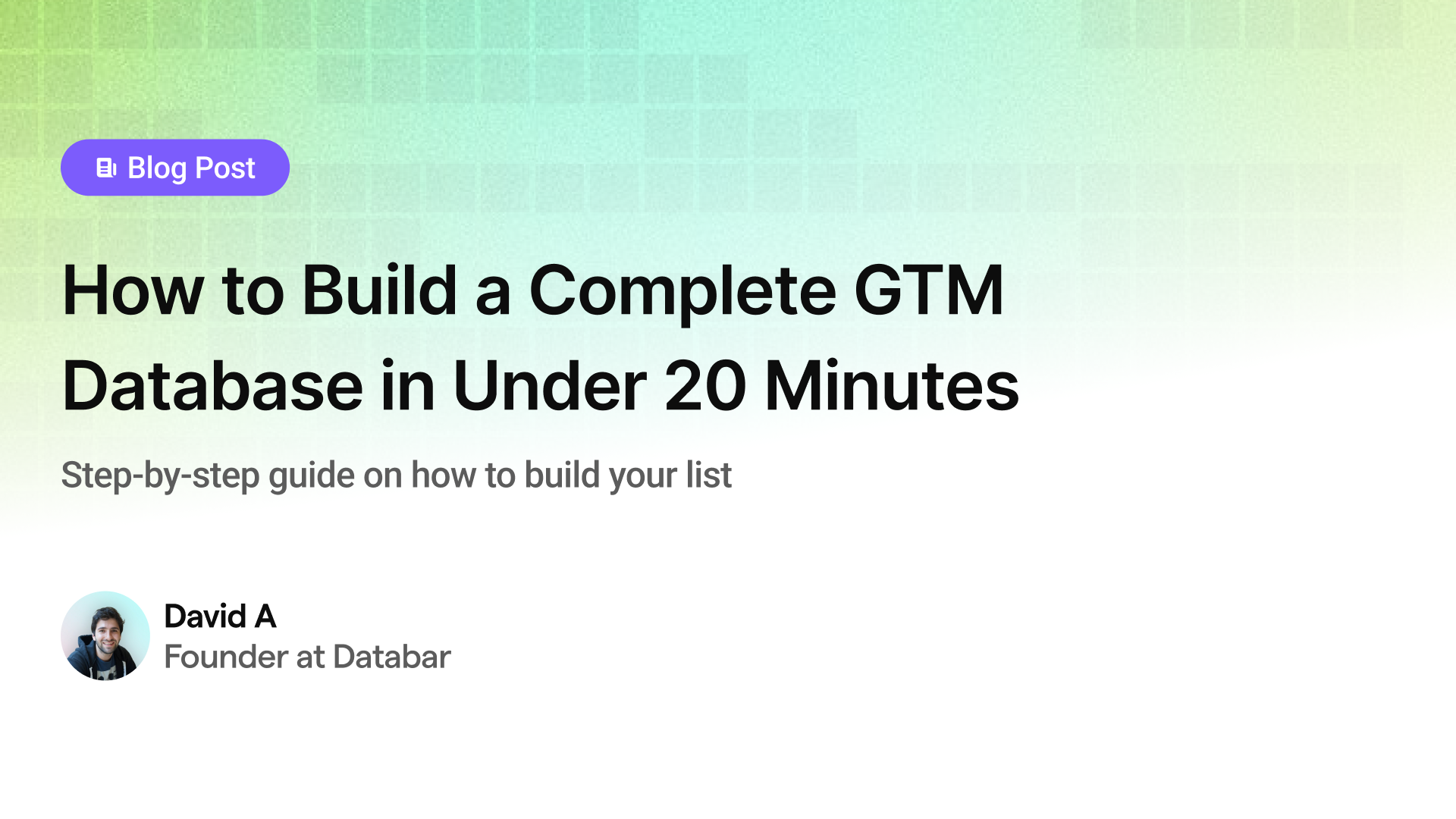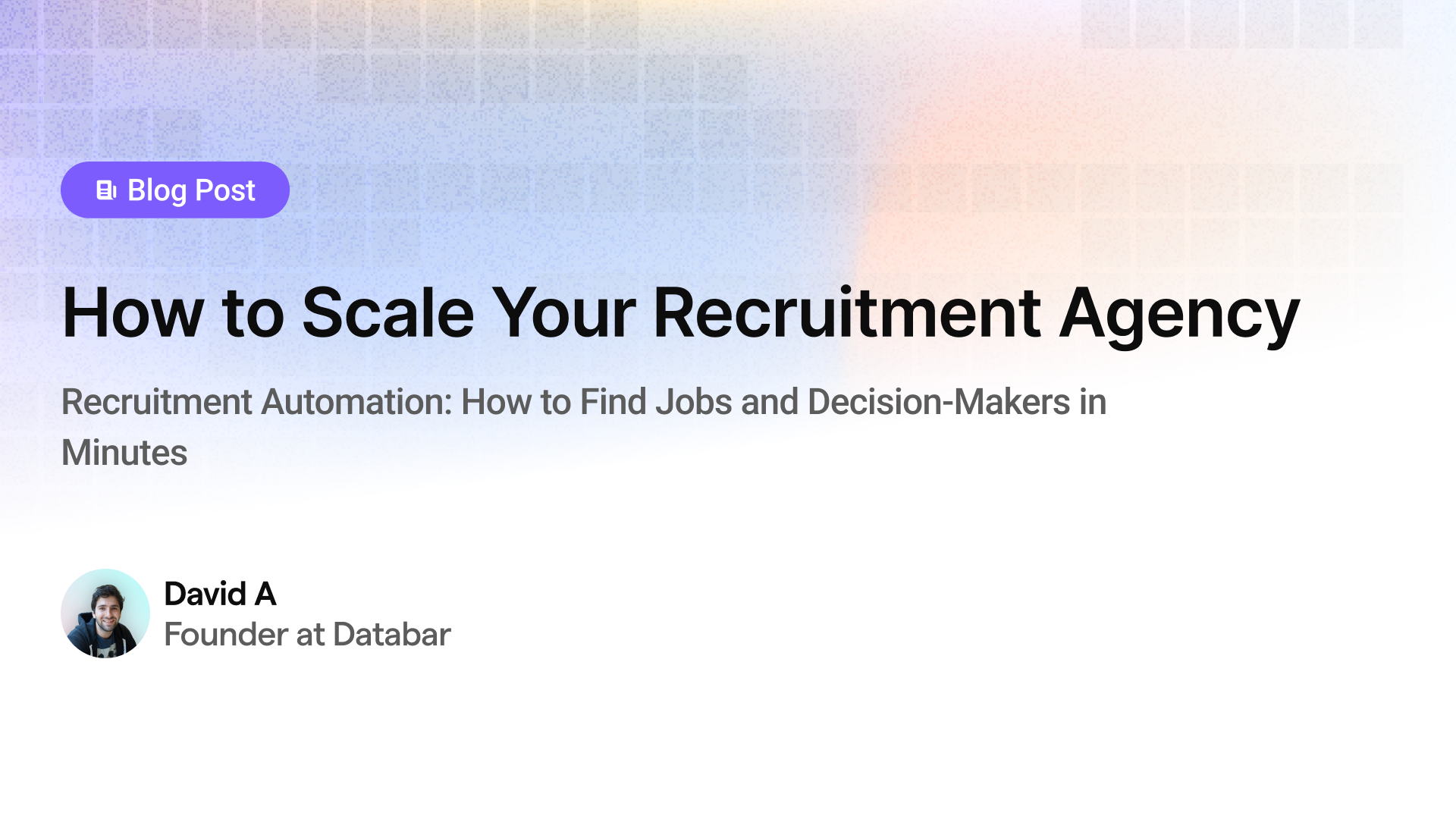How to Clone Your Best Customers
The Ultimate B2B Lookalike Audience Guide
Tutorialsby JanMay 14, 2025

Key Takeaways:
- Lookalike prospecting can increase conversion rates by up to 40% compared to traditional cold outreach
- The right lookalike methodology analyzes 20+ data dimensions, not just basic firmographics
- Effective implementation requires quality seed accounts, multi-source data enrichment, and strategic targeting
- Automated workflows can reduce prospecting time from days to minutes while improving lead quality
Every sales and marketing team has experienced that magical customer—the one who was perfect from day one. They understood your value proposition immediately, moved quickly through your sales process, and now they're an advocate who keeps expanding their account.
What if you could replicate that success story with mathematical precision?
That's exactly what lookalike prospecting delivers—a data-driven way to clone your best customers and build targeted prospect lists filled with companies that match your ideal profile. In this comprehensive guide, we'll walk through how to implement lookalike prospecting for dramatically improved conversion rates and sales efficiency.
Why Traditional Prospecting Falls Short
Before diving into lookalike methodology, it's worth examining why conventional prospecting approaches often disappoint:
The Limitations of Basic Firmographic Targeting
| Traditional Approach | Limitation | Impact |
|---|---|---|
| Industry filtering | Too broad | High volume, low relevance |
| Employee count ranges | Misses nuance | Similar-sized companies with different needs |
| Geographic targeting | Surface-level | Ignores deeper company attributes |
Most companies start prospecting by defining simple firmographic criteria—industry, company size, and geography. While this creates a basic foundation, it's far too broad to be truly effective.
Consider this: Two companies might share identical firmographic profiles (e.g., "Financial Services, 500-1000 employees, North America") yet have completely different needs, technology stacks, buying processes, and cultural values. Treating them as interchangeable targets ignores the nuanced factors that determine whether they're genuinely good fits for your solution.
The Problem with Manual Account Research
Even teams that move beyond basic firmographics often fall into the trap of manual research—painstakingly investigating companies one by one to assess their potential fit. This approach creates three significant problems:
- Scale limitations: Even the most diligent researcher can only thoroughly investigate a handful of companies per day, creating an insurmountable bottleneck
- Inconsistent evaluation: Different team members apply varying standards when assessing prospects, leading to quality inconsistencies
- Resource drain: Hours spent on manual research are hours not spent on high-value sales conversations and relationship building
The result? Sales teams waste precious time pursuing poor-fit prospects while missing high-potential opportunities hidden in plain sight.
The Lookalike Prospecting Solution
Lookalike prospecting takes a fundamentally different approach by using advanced data science to identify companies with similar characteristics to your proven customers.
Multi-Dimensional Analysis: Beyond Basic Firmographics
| Traditional Data Points | Lookalike Data Dimensions |
|---|---|
| Industry | Technology adoption patterns |
| Company size | Content and keyword usage |
| Geography | Growth trajectories and funding |
| Hiring trends and job postings | |
| Social media activity | |
| Product focus and offerings | |
| Leadership background |
The key difference is scope and precision. Rather than relying on a handful of basic filters, lookalike modeling analyzes companies across dozens of dimensions, including:
- Technology adoption patterns
- Content and keyword usage
- Growth trajectories and funding history
- Hiring trends and job postings
- Social media activity and digital presence
- Product focus and service offerings
- And more...
This multi-dimensional analysis creates a much more accurate picture of what makes your best customers unique—and allows you to find companies that truly match their profile rather than just their surface-level characteristics.
Building Your Lookalike Prospecting Process
Creating an effective lookalike prospecting workflow involves four essential components:
1. Identifying Your Seed Accounts
The first and most crucial step in lookalike prospecting is selecting the right "seed" accounts—the exemplary customers you want to clone. Choose carefully, as these accounts will define the pattern your lookalike algorithm searches for.
Best Practices for Seed Selection:
- Include 3-10 customers with similar characteristics
- Focus on accounts with strong product adoption and growth potential
- Consider customers who had efficient sales cycles and low acquisition costs
- Prioritize recent customers whose circumstances still reflect current market conditions
Contrary to popular belief, using more seed accounts isn't always better. A tightly focused group of very similar high-value customers typically produces more accurate results than a larger, more diverse collection.
2. Multi-Dimensional Pattern Analysis
With your seed accounts in place, the next step is analyzing what makes them similar across multiple dimensions. This is where advanced data platforms become essential, as they can process thousands of data points to identify meaningful patterns.
Key Analysis Dimensions:
- Firmographic foundation (industry, size, location)
- Digital footprint (web content, SEO keywords, site structure)
- Technology stack (current tools, integration patterns)
- Business model and offering alignment
- Growth indicators and market position
This comprehensive analysis goes far beyond what any manual research process could accomplish, uncovering subtle similarities that human analysts might miss entirely.
3. Scaled Lookalike Discovery
Once your seed pattern is established, the real power of lookalike prospecting emerges: the ability to scan entire company databases to find matches at scale. Advanced platforms can evaluate tens of thousands of companies against your pattern in minutes, producing a prioritized list of prospects ranked by similarity to your seed accounts.
Scoring and Prioritization Options:
- Sort prospects by match quality percentage
- Understand which specific attributes create the strongest alignment
- Set different thresholds for different campaigns or sales territories
- Balance quantity and quality based on your pipeline needs
This nuanced approach ensures you're not just finding "similar" companies but truly identifying the prospects most likely to convert based on proven patterns.
4. Enrichment and Activation
Finding lookalike companies is only half the battle. To turn these insights into actionable opportunities, you need comprehensive data about each prospect, including:
- Decision-maker contact information
- Current technology investments
- Recent company developments
- Digital engagement signals
- Competitive context
With this enriched data, sales teams can craft personalized outreach that addresses each prospect's specific situation rather than relying on generic messaging. This dramatically increases response rates and accelerates the sales process by establishing relevance from the first touch.
How Databar.ai Transforms Lookalike Prospecting
While lookalike prospecting offers tremendous potential, implementing it effectively has traditionally required multiple tools, complex data management, and specialized expertise. Databar.ai changes this equation by providing an integrated platform that makes lookalike prospecting accessible and efficient.
Key Advantages of Databar.ai's Approach
| Traditional Challenge | Databar.ai Solution |
|---|---|
| Multiple disconnected tools | Unified platform from seed to final outreach |
| Incomplete data coverage | Waterfall enrichment across 90+ providers |
| Generic outreach | AI-powered personalization at scale |
| Complex implementation | Intuitive workflow and guided process |
Seamless Seed-to-Outreach Process
Databar.ai integrates with Ocean.io, DiscoLike and PandaMatch to provide powerful lookalike capabilities within a unified workflow. This allows you to move from seed companies to enriched prospect lists to personalized outreach in a single platform—eliminating the data transfers and tool switching that typically complicate prospecting processes.
Multi-Provider Data Enrichment
One of the biggest challenges in prospecting is finding accurate, comprehensive data about potential customers. Databar.ai solves this through it's multi-source approach, which checks multiple data providers sequentially until it finds the information you need.
This multi-source methodology significantly increases data coverage and accuracy compared to single-provider approaches, ensuring you have the insights needed to qualify and engage each lookalike prospect effectively.
AI-Powered Personalization
Finding the right prospects is only valuable if you can engage them effectively. Databar.ai's integrated AI capabilities automatically generate personalized outreach messages for each lookalike company based on the specific attributes that make them similar to your seed accounts.
This personalization at scale means you can maintain high-quality, customized communication even when targeting hundreds or thousands of lookalike prospects—dramatically increasing response rates compared to generic outreach.
Implementing Your Lookalike Prospecting Workflow
Ready to start cloning your best customers? Here's a step-by-step implementation guide using Databar.ai:
Step 1: Prepare Your Seed Accounts
Action Items:
- Identify 3-5 of your absolute best customers
- Gather their company domains
- Ensure they truly represent your ideal customer profile
Selection Criteria:
- Similar use cases for your product
- Strong ROI from your solution
- Efficient sales process movement
- Representative of target market segment
Step 2: Generate Lookalike Matches
Process:
- Create a new table in Databar.ai
- Select the Ocean.io integration for lookalike companies
- Input your seed company domains
- Specify desired number of lookalike matches
- Apply additional filters if needed (size, geography, industry)
Refinement Filters:
- Company size (employee count or revenue)
- Geographic focus
- Industry or vertical
- Growth stage
This step typically takes just a few minutes but replaces what would otherwise be days of manual research.
Step 3: Enrich Company Information
Key Data Points to Collect:
- Company size and revenue details
- Industry classification and focus areas
- Technology stack and current tools
- Recent news and developments
- Social media presence and content
This enriched profile helps you understand each lookalike company's specific situation and needs, enabling more relevant outreach.
Step 4: Identify Decision Makers
Target Roles Based On:
- Solution complexity (C-suite vs. department heads)
- Budget authority requirements
- Implementation stakeholders
- Typical product champions
This targeted approach ensures you're reaching the right people with decision-making authority rather than wasting time on contacts who can't advance the deal.
Step 5: Obtain Contact Information
Verification Process:
- Use Databar.ai's waterfall email finder
- Verify all addresses before outreach
- Collect alternative contact methods
- Note preferred communication channels
This comprehensive contact data ensures your carefully crafted messages actually reach your target prospects.
Step 6: Create Personalized Outreach
Personalization Elements:
- References to specific similarities with seed accounts
- Relevant company information
- Customized value propositions
- Conversational opening lines
This personalization transforms your outreach from generic spam into relevant, thoughtful communication that generates significantly higher response rates.
Measuring Lookalike Prospecting Success
To evaluate and optimize your lookalike prospecting efforts, track these key metrics:
| Metric | Description | Benchmark |
|---|---|---|
| Response Rate | Percentage of prospects who respond to initial outreach | 2-3x higher than traditional prospecting |
| Qualification Rate | Percentage of responding prospects meeting qualification criteria | Indicates pattern accuracy |
| Conversion Timeline | Average time from first touch to qualification/closure | Typically accelerated due to better targeting |
| Customer Lifetime Value | Long-term value comparison with other acquisition channels | Measures both acquisition efficiency and customer quality |
By monitoring these metrics, you can continuously refine your seed accounts, lookalike criteria, and targeting approach to maximize both efficiency and effectiveness.
Common Pitfalls to Avoid
While implementing lookalike prospecting, watch out for these common mistakes:
⚠️ Using Too Many Seed Accounts
Problem: Using too many diverse seed accounts dilutes your pattern and produces less accurate matches. Solution: Focus on a small group of truly exemplary customers rather than including every account.
⚠️ Neglecting Data Verification
Problem: Even the best lookalike systems require data verification before outreach. Solution: Always validate company information and contact details to avoid wasting effort on outdated or inaccurate data.
⚠️ Overlooking Personalization
Problem: Finding the right prospects is only half the battle—you still need relevant, personalized outreach. Solution: Don't undermine great targeting with generic messaging; use the data you've gathered to create truly personalized communications.
⚠️ Forgetting the Human Element
Problem: Over-reliance on automation can create disconnected experiences. Solution: Use the time saved by automation to invest in deeper research and more thoughtful engagement with your highest-potential prospects.
Conclusion: The Future of Data-Driven Prospecting
Lookalike prospecting represents a paradigm shift in how B2B companies identify and engage potential customers. By moving beyond basic firmographics to multi-dimensional pattern analysis, sales teams can find genuinely compatible prospects at scale—dramatically increasing efficiency and conversion rates.
With platforms like Databar.ai that integrate lookalike discovery, data enrichment, and personalization capabilities, this sophisticated approach is now accessible to sales teams of all sizes. The days of manually researching prospects one by one are over; the future belongs to data-driven teams who can clone their best customers with mathematical precision.
Ready to transform your prospecting process? Start your journey with Databar.ai today and discover how its integrated lookalike capabilities can help you find and engage the perfect prospects for your business. With access to 90+ data providers, powerful automation features, and AI-driven personalization, you can build a prospect list of companies that truly match your ideal customer profile—all in minutes instead of days.
Related articles

How to Integrate Attio CRM with Databar and Enrich Your Data
Fill CRM Data Gaps with Verified Contacts, Intent Signals, and Buying Intelligence
by Jan, October 22, 2025

Instagram Profile Data Scraper: Complete Guide to Finding and Enriching Business Accounts
Instagram Profile Research: Collect, Enrich, and Analyze Data to Boost Your Marketing Strategy
by Jan, May 23, 2025

How to Build a Complete GTM Database in Under 20 Minutes
Step-by-step guide on how to build your list
by Jan, May 02, 2025

How to Scale Your Recruitment Agency
Recruitment Automation: How to Find Jobs and Decision-Makers in Minutes
by Jan, April 29, 2025